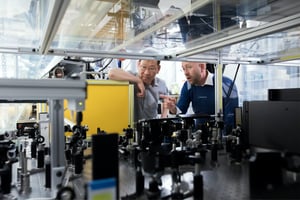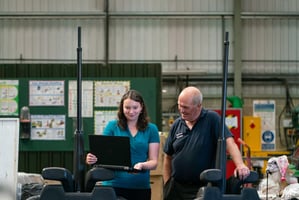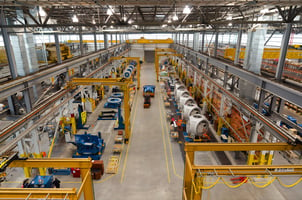Manufacturing Day (“Mfg Day”) is held each year on the first Friday in October, but events...
New Modular Nuclear Reactor Design Receives Federal Approval
U.S. officials at the Nuclear Regulatory Commission (NRC) have accepted a proposal for a small commercial nuclear reactor for the first time. According to Scientific American, the small modular reactor (SMR) will be built by NuScale Power and is the first of its kind in the U.S.
This milestone results from over $400 million in funding by the Department of Energy to speed up the production and deployment of SMRs since 2014. This achievement puts NuScale on track to obtain a complete design certification from the regulator by August 2021.
The NuScale SMR is an advanced small modular light-water reactor capable of producing 60 megawatts or enough to power more than 50,000 homes.
Up to 12 modules can be housed in one power plant, and these modules will be factory-built and around a third the size of a large-scale reactor.
The benefits of SMRs
The new nuclear reactors have many advantages over earlier nuclear reactors, according to NuScale:
Easier to build: The modularity of SMRs means that they can be primarily assembled in a factory and then dropped into place, saving firms from having to construct a large, complex installation on-site. That could help mitigate some of the ongoing financial problems of nuclear power.
Safer: One benefit of the small modular design is that each device contains a smaller quantity of radioactive material. In an emergency, it has a smaller volume of heat to get rid of. This safety feature of the SMR was acknowledged by the NRC in its report signing off on NuScale's application: "The NRC concludes the design's passive features will ensure the nuclear power plant would shut down safely and remain safe under emergency conditions, if necessary."
A smaller physical footprint: An innovative design makes it possible for the reactor to passively cool itself without the need for additional water, power, or even operator intervention. This primary safety function could decrease the site boundaries in the emergency planning zone, dramatically reducing the power plant's footprint.
Less dependence on fossil fuels: Some nuclear industry supporters claim that SMRs are the best choice for the short-term implementation of large quantities of emission-free power to help tackle climate change.
What the critics are saying
Not everyone is pleased about the NRC's approval of SMRs.
Because of unresolved nuclear waste disposal problems, some analysts doubt that fast reactors such as the SMR will become popular. Quoted in Science Magazine, Allison Macfarlane, a public policy and geologist professor at George Washington University in Washington, D.C., and former chairman of the Nuclear Regulatory Commission remarked: "The waste issues are probably what's going to choke the life out of the fast-reactor designs."
Other experts have expressed skepticism regarding potential cost overrun. "I am sorry to say that what lies ahead is risky and costly." argued M. V. Ramana, a nuclear expert at the University of British Columbia. He claims that cost estimates for nuclear projects have risen from about $3 billion to more than $6 billion over the past five years. Market prices for nuclear-produced electricity could thus far exceed those associated with other emission-free electricity sources, such as solar and wind, he added.
An industry in need of a boost
According to the World Nuclear Association, the US is the world's largest nuclear power producer, accounting for more than 30 percent of the world's nuclear electricity production. In 2019, American nuclear reactors produced 809 billion kWh, around 20 % of all electrical output in the US.
Since the 1970s, however, the United States has not installed a conventional nuclear plant, with recent proposals abandoned or postponed due to increasing expenses. Also, due to competition from cheaper natural gas and renewables, established nuclear plants are closing rapidly.
But the industry is betting on the production of smaller, cheaper reactors such as NuScale's SMRs. These are part of a much broader U.S. initiative to replace more powerful and safer reactors with existing reactors, many of them decades old.
The first planned project for NuScale is with Utah Affiliated Municipal Power Systems (UAMPS), a state-based organization that provides local, community-owned utilities in neighboring states with wholesale electricity. , NuScale aims to deliver the first reactor to the UAMPS project at the Idaho National Laboratory by 2027, and it is expected to be operational by 2029.



